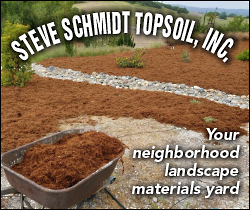Can learning how to taste wine enhance the experience, or is it just for wine snobs?
–A message from MWWine School-

MWWine School’s Melanie Webber in a Paso Robles vineyard holding wine made by one of her students.
– We have probably all experienced it. Being at a wine festival or tasting room and hearing some wine ‘aficionado’ loudly proclaim “notes of fresh berries on a spring day, recently sawed wood, and a touch of forest floor,” when all you are smelling in your glass is either nothing of the kind or maybe a whiff of strawberry and a bit of vanilla.
And anyone who has seen the film Somm, where ‘fresh-cut garden hose’ is trotted out as a descriptor, or Sideways where Miles goes into poetic raptures (as Jack surreptitiously chews gum), knows that the language of wine tasting can be mystifying, intimidating and often downright ridiculous. But it absolutely shouldn’t be.
This is why the WSET (Wine & Spirit Education Trust) Systematic Approach to Tasting (SAT), which I have been teaching at MWWine School in Paso for the past six years, makes so much sense. Wine tasting can be so subjective, and having a relatively simple equation for assessing wine outside of personal preferences can take the intimidation out of the process and deepen the enjoyment. For wine professionals, it can further their understanding of the where, why, and how of the wine in their glass, while encouraging wine enthusiasts to stop and smell the roses.

Students in MWWine School using WSET’s Systematic Approach to Tasting.
The SAT begins by assessing appearance: what color is it and how deep is it? If it is red wine, you determine the color from the rim of the liquid when you tilt the class, if it is white, from the core. This can give you clues about the grape variety, the age of the wine, oak use, and so on. Then, swirl your glass and see how far you have to stick your nose in to capture the aromas. Are you smelling ‘primary’ aromas from the grapes (flowers, tree fruit, stone fruit, berries, herbaceous, etc.), ‘secondary’ aromas from post-fermentation winemaking (butter, vanilla, cedar, toast), ‘tertiary’ aromas (leather, earth, honey, nuts) from the maturation process?
Already you have found out a lot about that wine without even tasting it. But, of course, tasting is everything, so now put that beautiful liquid on your palate. Is there any sweetness? Does your mouth water (acid)? Is your palate drying (tannin)? Does your throat burn (alcohol)? What is the feel of the wine in your mouth (body)? How intense and identifiable are the flavors? Are they the same on the palate as on the nose and, finally, how long do the pleasant flavors linger (finish/length)? Then, ask if all those elements are in balance. And that, plus the length of the finish and your measure of the intensity and complexity of those flavors, will give you your quality assessment.
It is neither as easy nor as complicated as I have made it sound. While it does take practice to delineate those flavors and aromas, most students catch on very quickly, and the SAT lays a solid foundation from which their wine knowledge can soar. One of the great pleasures I take as a wine educator is not only seeing that light bulb go off as students begin to recognize and put together these elements but also – even as we strive for a relatively unified language – hearing their creative descriptions.
In the end, being more present when you taste wine is always worthwhile, as long as you have faith in your own palate and are willing to explore, and WSET can help you along that path. Apart from that, a tried-and-true rule of thumb is to just drink what you like and spit out what you don’t! Cheers!
Melanie teaches WSET Level 1, 2, and 3 Award in Wines classes in Paso Robles at her Central Coast-based wine school MWWine School, and has helped over 600 local wine industry pros and enthusiasts achieve their certifications. She is part of the founding team of The Garagiste Festival that launched in Paso Robles 14 years ago.
Click here for more information on Melanie’s WSET Level One and Two classes in March at Adelaida Vineyard and Winery or go to melaniewebberwine.com.












